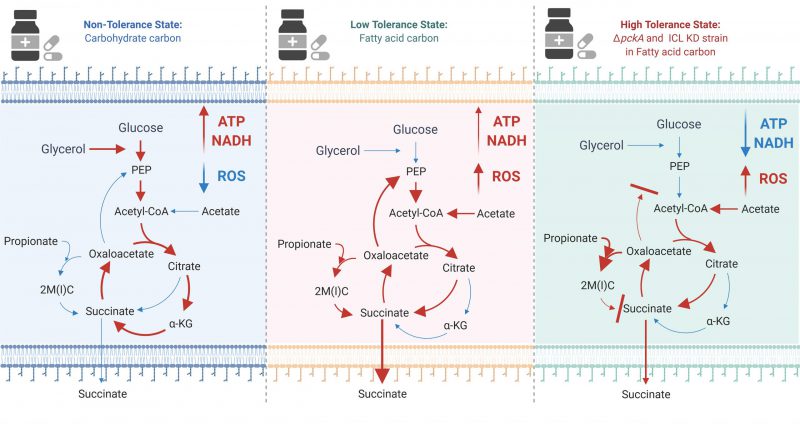Back to article: Fatty acid metabolism of Mycobacterium tuberculosis: A double-edged sword
FIGURE 1: The effect of carbon metabolism on drug tolerance of Mycobacterium tuberculosis. The new findings indicate that fatty acids (acetate or propionate) alter Mtb central carbon metabolism, triggering a dormant-like state and drug-tolerance. In glycerol media, glycolysis and TCA cycle are active to biosynthesize ATP and NADH. NADH serves as a substrate of ETC activity, leading to biosynthesis of high levels of ATP (Left panel). Fatty acids activate the methylcitrate cycle (MCC) and accumulates the reductive TCA cycle branch intermediates. Accumulated MCC intermediates alter ETC activity and increases the ROS level as compared to those in glycerol media. Succinate secretion is an additional activity involved in maintaining the membrane potential (Middle panel). ΔpckA and ICL KD in fatty acid media induce metabolic remodeling associated with high drug tolerance. Over-accumulated MCC intermediates, slowed TCA cycle activity, reduced ATP levels, induced ROS, increased NADH/NAD ratios, and a relatively stable membrane potential are mechanistic bases underlying fatty acid-induced drug tolerance of ΔpckA and ICL KD (Right panel). Figures were created by BioRender.com.

